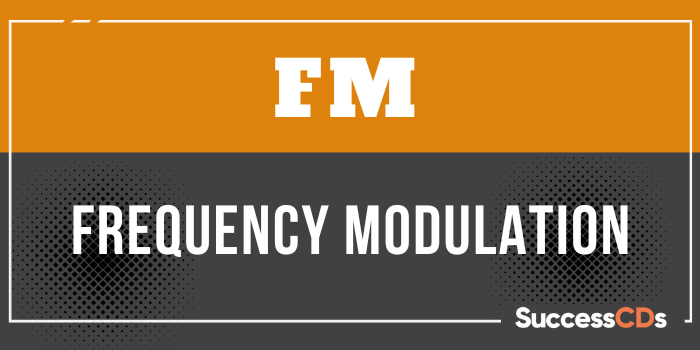
The Full form of FM is Frequency Modulation. FM is also called as Frequency Modulated Electromagnetic Wave. Usually, it is used for broadcasting of FM and several other applications of radio communication. Frequency Modulation (FM) in telecommunication is a technique of transmitting information using a carrier wave. The carrier wave frequency is varied according to the polarity and amplitude of the input signal.
Both FM and AM are used for broadcasting of radio but AM is different from FM. AM stands for Amplitude Modulated Electromagnetic Wave. The amplitude of AM signals can be altered easily, so AM is prone to interference. On the other hand, Frequency Modulation is much less prone to interference because the amplitude of FM signals cannot be easily altered. The FM broadcasting technology was invented in the early 1930’s by Edwin H. Armstrong. Comparatively, the frequency range of FM radio is higher as it ranges from 1200 to 2400 bits per second or 88 to 108 MHz.
Due to its higher bandwidth, FM produces better sound quality. A modulation index (m>1) is used by FM radio which is called wideband FM. In terrestrial television broadcasts, the video signal is transmitted through Amplitude Modulation (AM), whereas the sound signal is transmitted through Frequency Modulation (FM). It helps in reducing the interference between sound and video signals.